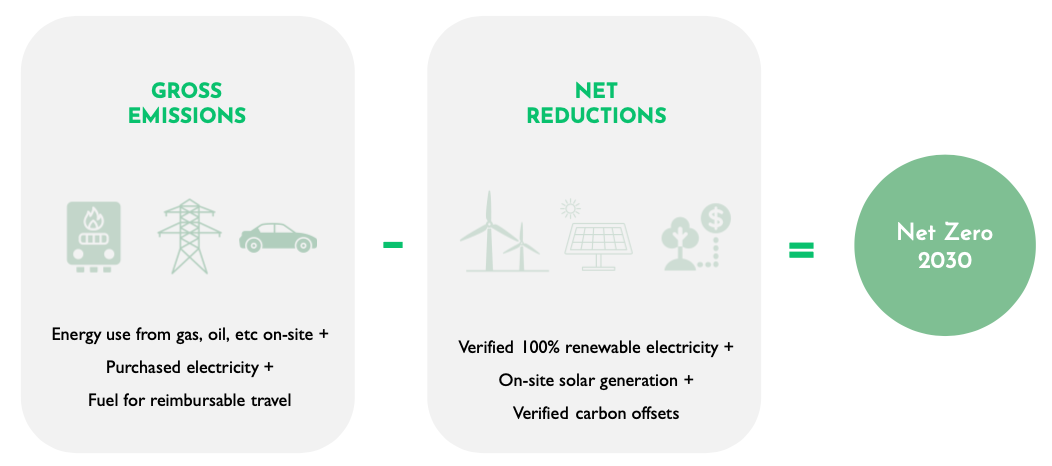Calculating Net Zero
To assess how you can get to net zero carbon emissions by 2030, you first need to work out what the total carbon emissions are across your charge. The first part of this is to calculate the emissions related to all energy use of oil and gas (scope 1 related emissions) as well as the electricity used in your buildings (scope 2 emissions).
You can do this by utilising the forthcoming Energy Footprint Tool, which provides a useful summary of the CO2 emissions associated with these two areas using data mainly from your energy bills (see Shared Governance section of this toolkit). This tool will also let you subtract any verified 100% renewable electricity tariffs you may have (see Clean Energy section of this toolkit) as well as any on-site solar generation that has been exported to the national grid.
Once you have calculated these scope 1 and 2 emissions, you also need to calculate the emissions associated with any work-related reimbursable travel from your clergy and staff (scope 3 related emissions). Collectively, these emissions (scope 1, 2 and 3) will then represent the total amount of carbon emissions for any one year. In the near term, focus should be placed on reducing these carbon emissions to zero as far as reasonably possible by 2030.

From the residual emissions that are left over, verified carbon offsets can be considered in order to achieve net zero. Further guidance on carbon offsetting will be released by the Provincial Environment Group (PEG) in 2025. In the meantime, all efforts should be focused on reducing carbon emissions in absolute terms.